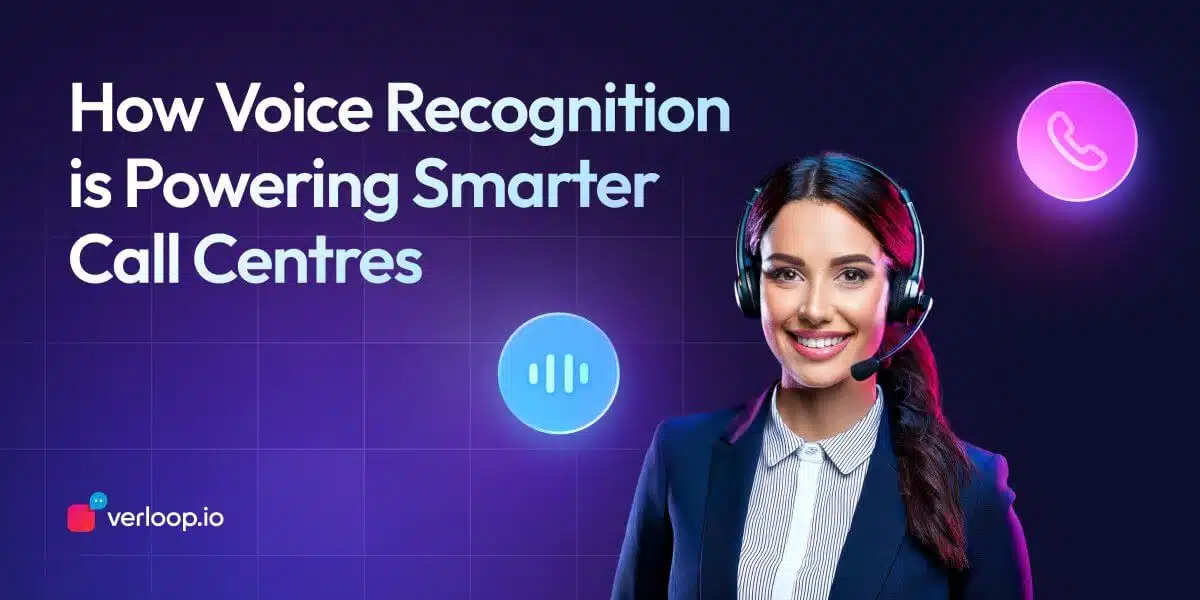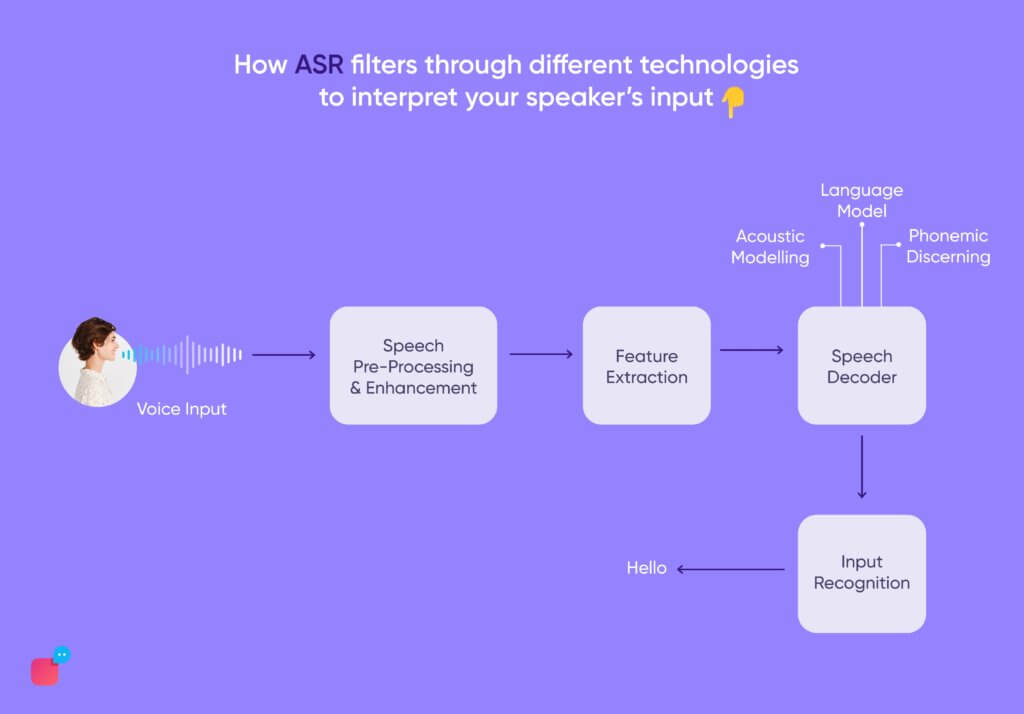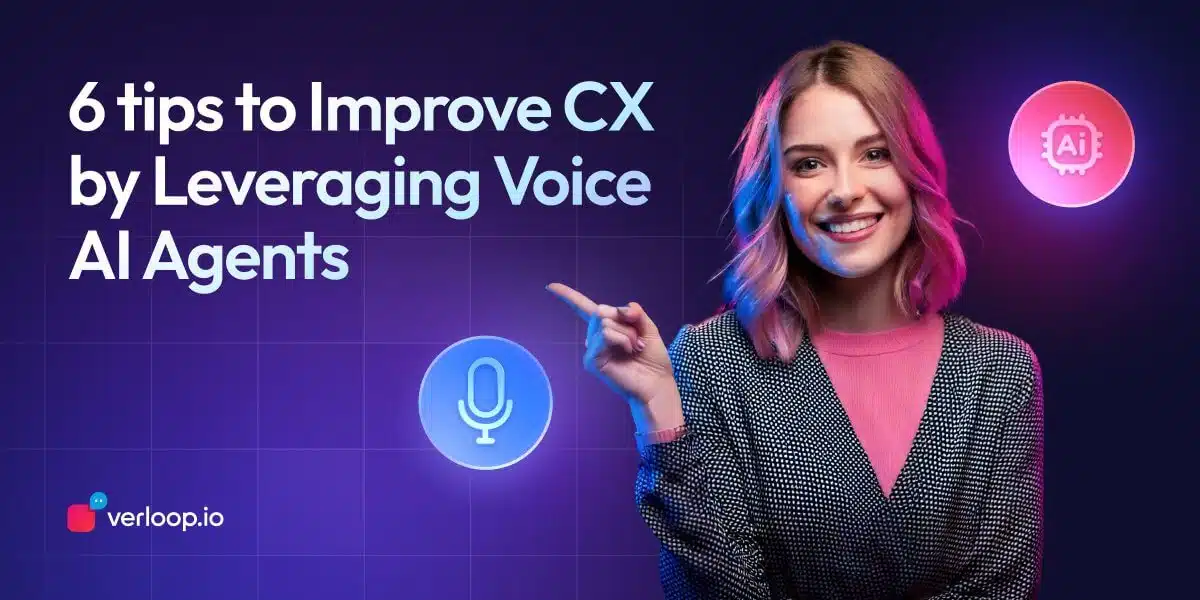
Why Voice Recognition Is The Next Big Thing For Call Centres?
- April 1st, 2025 / 5 Mins read
- Harshitha Raja
Voice recognition is quietly solving deep-rooted inefficiencies in call centres. Here’s how.
It wouldn’t be an exaggeration to consider that call centres are fast transforming into experience-first engagement hubs. What used to be transactional support lines are now key components of CX ecosystems—closely aligned with metrics like customer lifetime value, brand affinity, and user retention.
When customers contact a call centre—whether via voicebot, AI phone agent, or a live executive—they’re subconsciously evaluating the entire interaction. They’re:
- Scrutinising how effortless and intuitive the support feels
- Picking up on tone, personality, and the brand’s intent
- Sensing how fluid the interaction is
- Gauging whether their query is treated with urgency and empathy
- Assessing if they’re seen as individuals rather than ticket IDs
- Interpreting hold times and escalation speed as indicators of how much the brand values them
Call centres, powered by Conversational Voice AI, must move past basic voice recognition and deliver hyper-contextual, emotionally intelligent engagement across channels.
And right at the centre of this shift? Voice AI — particularly AI-powered automatic speech recognition (ASR) combined with context-aware understanding.
According to Statista, the voice recognition software market is projected to reach $27.16 billion by 2026, up from $10.7 billion in 2020. Not surprising, considering the advancements in Voice-Based Conversational AI platforms and the growing adoption of human-like voice agents in both outbound voice AI and inbound voice AI use cases.
Let’s take a closer look at how AI Voice Support is transforming traditional call centre ops into smart, AI-first experience engines.
Voice Recognition Technology – A primer
At its core, voice or speech recognition enables machines to accurately interpret spoken inputs and respond in a way that feels natural and intuitive.
The most common form—speech-to-text—converts spoken words into structured digital text. Using deep neural networks and machine learning, it builds intent models to detect user needs, enabling accurate, real-time conversations with AI Phone Agents.
Call centres are an ideal environment for deploying Voice AI Calls and automating repetitive support flows. AI Call platforms, especially those like Verloop.io, now come equipped with advanced ASR pipelines capable of handling high call volumes with improved context understanding and multilingual support.
Verloop.io’s Voice AI platform now supports over 40+ languages and dialects, significantly expanding its footprint in both inbound voice AI and outbound voice AI communication channels.
Want to see how Verloop.io improved ASR accuracy with deep learning error correction? Learn more here.

3 ways voice recognition facilitates the evolution from call to experience centres
A day at any call centre still involves non-stop ring tones, status updates, and growing queues. Scaling this manually is no longer sustainable. That’s where AI Voice Support, powered by robust ASR and voice-based conversational AI, kicks in. Here’s how:
1. Content discovery and contextual awareness
Voice AI can parse every conversation for more than just words—it can identify tone, urgency, emotion, and patterns. With real-time AI voice conversation capabilities, it classifies speech components (intonation, cadence, phonemes) and creates a semantic model of what the customer actually wants.
Key takeaways:
- Personalised, content-driven experiences
- Ability to surface curated responses and resolutions automatically
- Contextual understanding through continuous learning of customer behaviour
This allows Voice Assistant Calls to move from reactive service to proactive, intent-driven experiences. Best Conversational Voice AI platforms use these models to power real-time understanding and recommendations.
2. Prompt, intelligent call routing
Rigid IVRs are becoming obsolete. Structured menus simply can’t scale with rising customer expectations. Studies (like the one by Vonage titled “RIP IVR: 1980-2020”) showed that over 50% of users drop off due to frustrating IVR flows.
Conversational AI changes that. With automated voice agents that detect sentiment, intent, and urgency, call routing becomes fluid. If the AI voice support agent senses frustration or detects a non-routine query, it instantly escalates the session to a human counterpart—reducing churn and enhancing first-contact resolution.
Key upgrades:
- Smart triaging based on urgency and topic
- Emotional intelligence built into AI Call Platforms
- Immediate escalation protocols when empathy is required
This isn’t just automation. It’s automated voice AI with a human-like experience layer.
3. Differentiated customer experience
As highlighted earlier, Voice AI Calls are redefining how contact centres deliver service by closing the gap between customer expectations and real-time responsiveness. This shift is powered by AI Voice Support systems that can pick up on nuances like colloquial speech, emotional tone, and conversational pacing.
Verloop.io’s proprietary ASR engine—trained on 1000+ hours of labelled customer interaction data—is designed to understand subtle variations in speech patterns and intonation. This enables the voice assistant to dynamically tailor its responses during a live interaction, just as a skilled human agent would.
Take, for example, a typical support call. The AI can break it down into three contextual phases:
Discovery → Expectation → Resolution.
Each of these phases represents an opportunity to personalise the journey based on user tone, urgency, and past behaviours.
This isn’t just AI automation—it’s human-like voice agent orchestration. Whether it’s a Gen AI Voice Call, an AI Phone Agent, or a Conversational Voice AI assistant across web or WhatsApp, the goal is consistency across every channel.
Multichannel voice conversations also feed into an omnichannel support strategy, where context from one touchpoint carries seamlessly into the next. This results in faster resolution, reduced user friction, and a far more aligned customer journey.
Ultimately, Voice-Based Conversational AI transforms support from rigid and reactive to responsive, contextual, and customer-aware—at scale.
The bottom line
Voice recognition is no longer just about translating speech into text. It’s about embedding intelligence into conversations—layering in sentiment analysis, dialect recognition, context awareness, and intent mapping.
Yes, interpreting nuance, emotion, and regional expressions is inherently complex. But modern AI Phone Agents—powered by deep learning ASR models—are managing these variables with increasing accuracy and contextual intelligence.
Verloop.io’s Voice AI Calls platform now integrates:
- 40+ languages and dialects
- Emotion and urgency detection
- Historical context threading
- Channel-aware interaction continuity
Whether you’re managing outbound voice AI campaigns, scaling inbound AI calls, or deploying multilingual, always-on support agents, the shift to human-like voice agents is a strategic leap forward.
Looking to automate your voice support or optimise your outbound call workflows?
Drop us a line or schedule a demo to explore how Verloop.io’s Voice AI tech is shaping the future of CX.
Schedule your personalised demo now!








